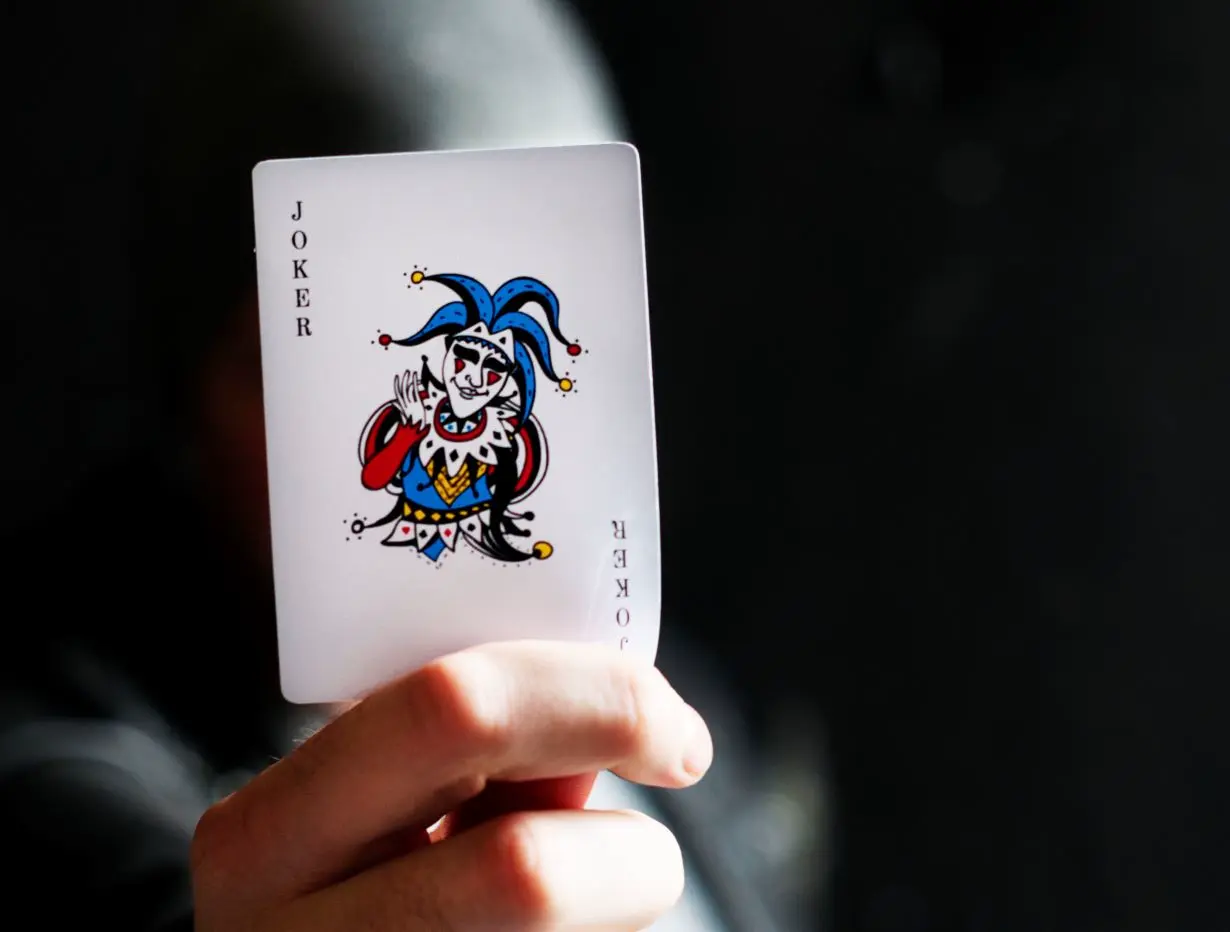Last Card, a fun and engaging card game, was conceived in the late 20th century. Its origins, though unclear, point towards New Zealand, where it is widely popular. The game has since spread across the globe, captivating players of all ages with its mix of simplicity and strategy. Last Card is typically played with two to six players, although it can accommodate more. The game’s primary objective is to be the first player to get rid of all the cards in your hand. This may sound straightforward, but the strategic use of special cards and the need to announce your “Last Card” inject complexity into this seemingly simple objective. The game is played with a standard deck of 52 cards just like blackjack, with the option to include Jokers for an added twist. Each card has a unique role in the game, with numbered cards (2-10) played in a standard fashion, while face cards (Jacks, Queens, Kings) and Aces have special abilities that can alter the course of the game. When Jokers are included, they also have a game-changing function. The game begins with the dealer shuffling the deck and distributing a set number of cards to each player. A card from the remaining deck is then turned face up to start the discard pile, with the rest of the deck serving as the draw pile. Players then take turns in a clockwise direction, playing a card from their hand onto the discard pile. The card played must match the number, face, or suit of the top card on the discard pile, unless a special card is played. If a player cannot play a card from their hand, they must draw a card from the draw pile. When a player gets down to their last card, they must announce “Last Card” to the other players. Failure to do so can result in penalties, adding an extra layer of attentiveness required to win the game. The first player to play all their cards wins the round. In the following sections, we will delve deeper into the specific rules and strategies that make Last Card a fascinating game to play. Whether you’re aiming for fun, competitive play, or simply to hone your strategic skills, Last Card has something to offer everyone. Setting up a game of Last Card is quite straightforward and follows these steps: In Last Card, each card has a specific role that affects the flow of the game. Understanding these roles is essential to playing and eventually mastering the game. The numbered cards (2-10) are the most straightforward cards in the game. They can be played on a card of the same number or the same suit in the discard pile. For instance, if the top card of the discard pile is a 7 of Hearts, you can play any Heart or any 7 from your hand. The ‘Last Card’ rule is vital to the game. When a player is down to their last card in their hand, they must announce “Last Card” to the other players. If they fail to do so and are caught by another player before the next player’s turn, they usually have to draw two penalty cards from the draw pile. This rule adds a layer of vigilance to the game, as players must not only focus on their cards but also keep an eye on their opponents’ plays. Once you’ve grasped the basics and understand the role of each card, it’s time to delve into the actual game play and strategies that can help you win in Last Card. The game starts with the player to the dealer’s left and proceeds in a clockwise direction. Each player, on their turn, plays a card from their hand that matches the number, suit, or face of the top card on the discard pile. If a player cannot play a card, they must draw from the draw pile. The goal of Last Card is to get rid of all your cards, so your strategy should focus on discarding as efficiently as possible. Try to get rid of high-value cards first, as these can result in high points if you’re caught with them at the end of a round. Additionally, holding onto a few special cards can give you more flexibility towards the end of the game. The timing of playing your special cards can drastically affect the outcome of the game. For example, playing a Jack to skip a player who has just announced “Last Card” can prevent them from winning the round. Similarly, a well-timed Ace or Joker can change the suit to something that you know an opponent doesn’t have, forcing them to draw from the pile. When a player is down to their last card, they must announce “Last Card” to the other players. This announcement is a critical part of the game, and forgetting to do so can result in a penalty, usually drawing two cards from the pile. This rule means you must stay alert, not only to your own game but also to what your opponents are doing. With these strategies in mind, you’ll be able to navigate the game of Last Card more effectively. Remember, though, that card games also involve an element of luck. Even with the best strategies, you’ll sometimes need the cards to fall in your favor. But with practice, you can improve your chances of winning and enjoy the game more. While the primary goal of Last Card is to be the first to get rid of all your cards, the game often includes a scoring system to track multiple rounds and determine an overall winner. Here’s how it works. At the end of each round (when a player has discarded their last card), the other players count the total points left in their hand. The points correspond to the face value of the cards, with numbered cards (2-10) worth their face value, face cards (Jacks, Queens, Kings) worth 10 points, and Aces worth 1 point. If Jokers are included, they are typically worth 15 or 20 points, depending on the agreed-upon rules. The player who discards their last card first wins the round and scores zero points for that round. All other players add the points of the remaining cards in their hand to their score. The game continues for a predetermined number of rounds, or until a player reaches a certain score, such as 100 points. The player with the lowest score at the end of the game is the winner. Winning in Last Card involves a mix of strategy, adaptability, and a bit of luck. Key strategies include playing high-point cards early, saving special cards for strategic moments, and always remembering to announce “Last Card.” A common mistake is forgetting to announce “Last Card,” which can lead to a penalty of drawing two cards. Players also sometimes hold onto special cards for too long, missing opportunities to use them effectively. By understanding the scoring system and applying effective strategies, you can increase your chances of winning in Last Card. However, it’s important to remember that, as with all games, the main goal is to have fun. Winning is just the icing on the cake. Like many card games, Last Card has several variations that can add an extra layer of strategy and fun. These variations can be based on regional rules, house rules, or simply a desire to mix things up. Different regions may have their own unique rules for Last Card. For example, in some areas, the game is played with multiple decks for a larger group of players. In other regions, certain special cards might have different effects. Before starting a game of Last Card, it’s always a good idea to clarify which rules and variations you’re using. This ensures all players understand and agree on the game’s rules, leading to a more enjoyable experience for everyone. Last Card is a dynamic and enjoyable card game that brings together a mix of strategy, skill, and a sprinkle of luck. While the rules of the game may seem simple on the surface, the strategic depth and variations add layers of complexity that keep players engaged and coming back for more. Mastering Last Card involves understanding the role of each card, staying alert to your own and your opponents’ game, and employing effective strategies to discard your cards efficiently. And while winning is always a thrill, the journey of the game, with its unexpected twists and turns, is where the real fun lies. Whether you’re playing for friendly competition, to build strategic skills, or simply to enjoy quality time with friends and family, Last Card offers a captivating and engaging experience. So, gather your deck, shuffle up, and deal yourself into the exciting world of Last Card.
Welcome to the intriguing world of card games, where strategy, luck, and skill intertwine to create an entertaining pastime enjoyed by millions worldwide. Among these games, “Last Card” stands out due to its straightforward rules, strategic depth, and engaging gameplay. Whether you’re a seasoned card player seeking a new challenge or a complete novice looking to dive into the card game realm, understanding the rules of Last Card is key to enjoying the game to its fullest potential. In this comprehensive guide, we aim to demystify the rules and strategies of Last Card, providing you with everything you need to become a competent player. By understanding these rules, you’ll not only increase your chances of winning but also deepen your appreciation for the game’s intricacies and strategic depth. Let’s shuffle the deck and deal you into the exciting world of Last Card.
🧾 Basic Description of the Game
⚙ Setting Up the Game
🃏 Understanding the Card Values and Their Functions
📙 Game Play and Strategies
🎖️ Scoring and Winning
⏩ Variations of Last Card
🔖 Conclusion
📌 FAQ
1️⃣ What is the Penalty for the Last Card?
2️⃣ Can You Use a Joker in Last Card?
3️⃣ What is the Last Card Rule Switch?
4️⃣ What is +2 Card Rule?
5️⃣ How Many Cards Can You Discard in 5 Card?
The Intricacies of Last Card: Rules, Strategies, and Variations
The penalty for failing to announce “Last Card” in most versions of the game is that the player has to draw two cards from the draw pile.
Yes, you can use a Joker in Last Card. In many variations of the game, the Joker is a wild card that can be played on any other card. The player who plays a Joker gets to choose the suit that the next player must play.
The “Last Card rule switch” isn’t a standard rule in Last Card. However, in some versions of the game, a Switch card can be used to change the current color or suit being played. This could be a house rule in some circles.
The “+2” card rule is a rule from the game variation called Last Card Plus. When a player plays a “+2” card, the next player must draw two cards from the draw pile, unless they can play a “+2” card of their own, in which case the following player must draw four cards, and so on.
In Last Card, you typically discard one card per turn onto the discard pile. However, in some other games like Five Card Draw Poker, the number of cards you can discard and draw on your turn can vary, often up to a maximum of five. But in the context of Last Card, you generally play one card from your hand onto the discard pile each turn.




















